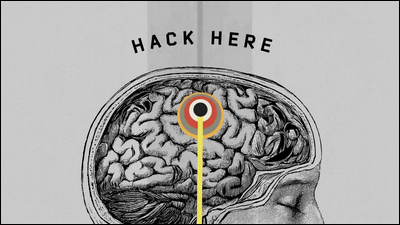How advanced is research on 'neural implants'

by
The `` neural implant (neural implant) '', which is said to have invested hundreds of millions of dollars (tens of billions of yen) by the U.S. Department of Defense and the National Institutes of Health, is a disease treatment and rehabilitation, connection and recognition between the brain and artificial artificial limbs The use has been started in various fields such as improvement of power and memory.
How Do Neural Implants Work?-IEEE Spectrum
https://spectrum.ieee.org/the-human-os/biomedical/devices/what-is-neural-implant-neuromodulation-brain-implants-electroceuticals-neuralink-definition-examples

A 'nerve implant' is a device that implants in the body and interacts with nerve cells (neurons). By recording signals from nerve cells, you can understand the information transmission pattern when you are healthy, and by emitting signals from devices, you can also affect nerve cells.
One of the most established uses is Deep Brain Stimulation Therapy (DBS) . This is to place an electrode deep in the brain and generate electrical stimulation to suppress the activity in that area. The US Food and Drug Administration (FDA) approved the use of DBS for essential tremor in 1997. Since then, DBS has been approved for Parkinson's disease, dystonia, tinnitus, epilepsy, obsessive-compulsive disorder, and neuropathic pain, and research is also being conducted on the treatment of mental disorders such as Tourette's disorder and depression. It is said that more than 150,000 people have received DBS so far in the world.
Deep Brain Stimulation Therapy (DBS) [Nagoya City University Hospital Neurosurgery Practice Guide] Neurosurgery | Nagoya City University Graduate School of Medicine
http://www.med.nagoya-cu.ac.jp/noge.dir/DBS.html
By stimulating the brain, we have also succeeded in improving memory ability for specific tasks. There have also been reports of spinal cord injuries that allowed people with lower paralysis to be able to walk.
Electrode implantation for DBS is less invasive as a brain surgery, but `` implanting a device in the brain and spinal cord '' is generally more invasive, so it is less invasive and works deep into the body Equipment development is underway.
One example is a 'stent rod' that does not require craniotomy because it can reach the brain via blood vessels.
Stentrode in action-YouTube
However, there is also a view that 'need more basic understanding of neural circuits in the first place'. Gene Civilico, a neuroscientist at the National Institutes of Health, said, `` Maps showing how nerve cells transmit information, and how neural circuits affect the brain and body. Without a map, even the most innovative implants would simply fire an electrical signal into the darkness. '
Related Posts:







